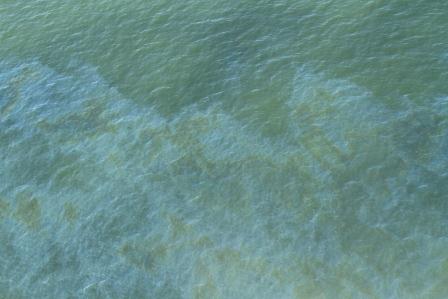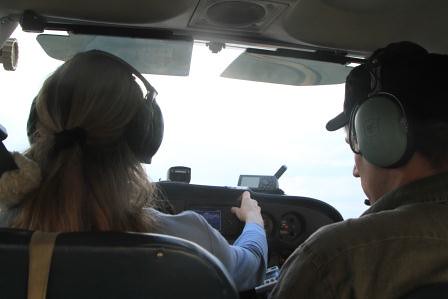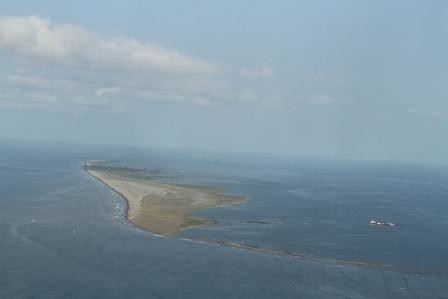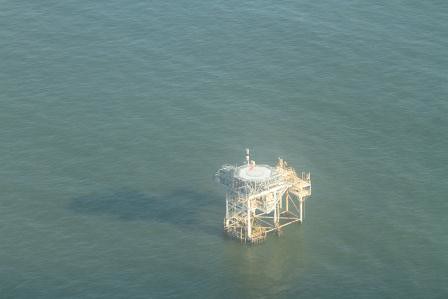When Blue Water turns all the colors of the Rainbow
By Scott Eustis. Cross-posted from the Gulf Restoration Network.
A while back, Jonathan Henderson and I were graciously invited to fly with Bonnie Schumaker and On Wings of Care, in order to scope for whale sharks, to document an ongoing oil release from one of the 27,000 abandoned wells in the Gulf, and to check on the land built by the West Bay Diversion. The flight was an amazing experience, a reminder of what beauty the Gulf holds, the vast and multitudinous threat that beauty faces, and the immediate need for an RCAC, a citizen’s group to fly the Gulf and witness for it.
Taylor Energy’s 30 mile long oil slick, off of the Birdfoot delta.
What we saw on the flight was as important as what we didn't see.
Bonnie was concerned about the lack of dolphins, and about a general lack of wildlife around Ewing Bank, a placed she is accustomed to seeing teeming with life. She repeatedly mentioned the fact that we should have been seeing dolphins on such a beautifully clear day.
Flying to Terrebonne from Lakefront Airport, we first reviewed the legacy of oil and gas destruction upon Louisiana’s coast, from the canals to the interior subsidence-a forced drowning of the fresh and brackish wetlands due to oil and gas extraction, to exterior areas where erosion is the name of the enemy. Pipelines and pipelines and the occasional shipping channel, all piercing into the heart of this Good Earth, are allowing saline Gulf waters and tidal Gulf forces to tear Louisiana apart bit by bit, like a threadbare shirt that can’t take the washing machine.
We also saw the humble human triumph of restored barrier islands, as we flew west of Trinity Island in the Isles Denieres. Here, waters of the Delta were greenish where once they were muddy with sediment falling from of the five fingers south of Houma.
As we moved from the Delta into the Gulf proper, we moved from the oil industry's past, destroyed marsh and thousands of keyhole canals, to the oil industry's present-day rigs, where many Gulf residents risk their lives for our transportation, the loneliest gas station attendants in the United States.
We spotted the Sargassum line far out from where it normally runs, says Bonnie, undoubtedly due to the high-powered river of 2011 pushing the seaweed and all of the critters that thrive in it and follow it out further over the shelf.
Five, then eleven, then three hammerhead sharks schooled in their slithery way near the surface of the water. Groups of sea turtles, small like Kemp's Ridleys, flew through the water in parallel to the line seaweed. Flotillas of Rays. Jonathan snapped this picture of a sea turtle from a thousand feet. See Jonathan's picture and read more.





